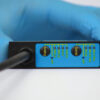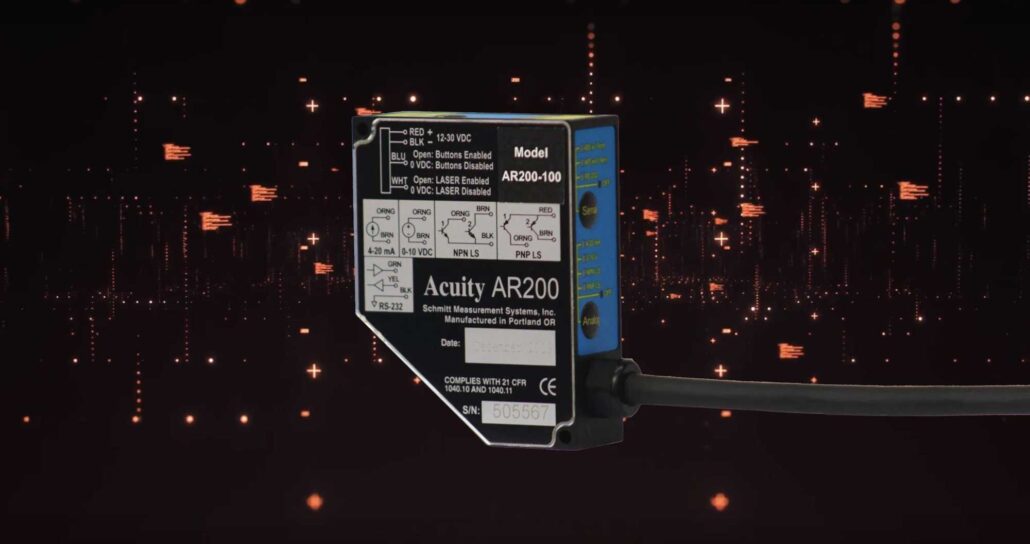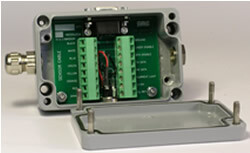Bulletproof Measurement
Acuity’s AR200 compact measurement sensor uses laser triangulation principles for precise displacement, distance and position measurements. The AR200 series contains five models with ranges from 6 mm (0.25 in) to 100 mm (4 in) with linearity to within 0.1% of the measurement range. All AR200 sensors employ a CMOS detector to achieve measurement frequencies up to 1250 Hz and resolutions to within 0.03% of the entire measurement range.
The AR200 emits a Class 2, red, visible laser diode and has a spot size as small as 35 microns in the middle of the measurement range.
Easy Integration
All AR200 models are standard with analog (4-20mA, 0-10V), serial (RS232), and limit switch outputs. The AR200 has two limit switches that will output a current of 100 mA if the measurement exceeds the programmable limit. The AR200 limit switches are used to trigger external PLC features such as secondary processes, audible and visible alarms or other PLC operations. All parameters and settings are selectable either from push-buttons on the sensor’s interface panel or through PC serial commands for ease of use. Acuity has worked with small and large volume customers to provide customized laser sensors with easy integrations into your existing workspace.
Durability in a Wide Range of Applications
Designed to withstand difficult industrial environments, the AR200 laser measurement sensor is commonly used in lumber, medical and high tech industries. The sensor can measure a wide range of materials from drywall to steel, and under some application circumstances, can be used to measure distances to glass. All AR200 models have a built-in automatic gain control feature to ensure quality measurement despite variations in target colors. Typical applications include steel strip thickness, flux height measurement, engine displacement & vibration measurement, amongst others. The AR200 laser measurement sensor comes at an attractive price point, and is used as replacement for LVDT sensors for a contract-free displacement measurement.

















